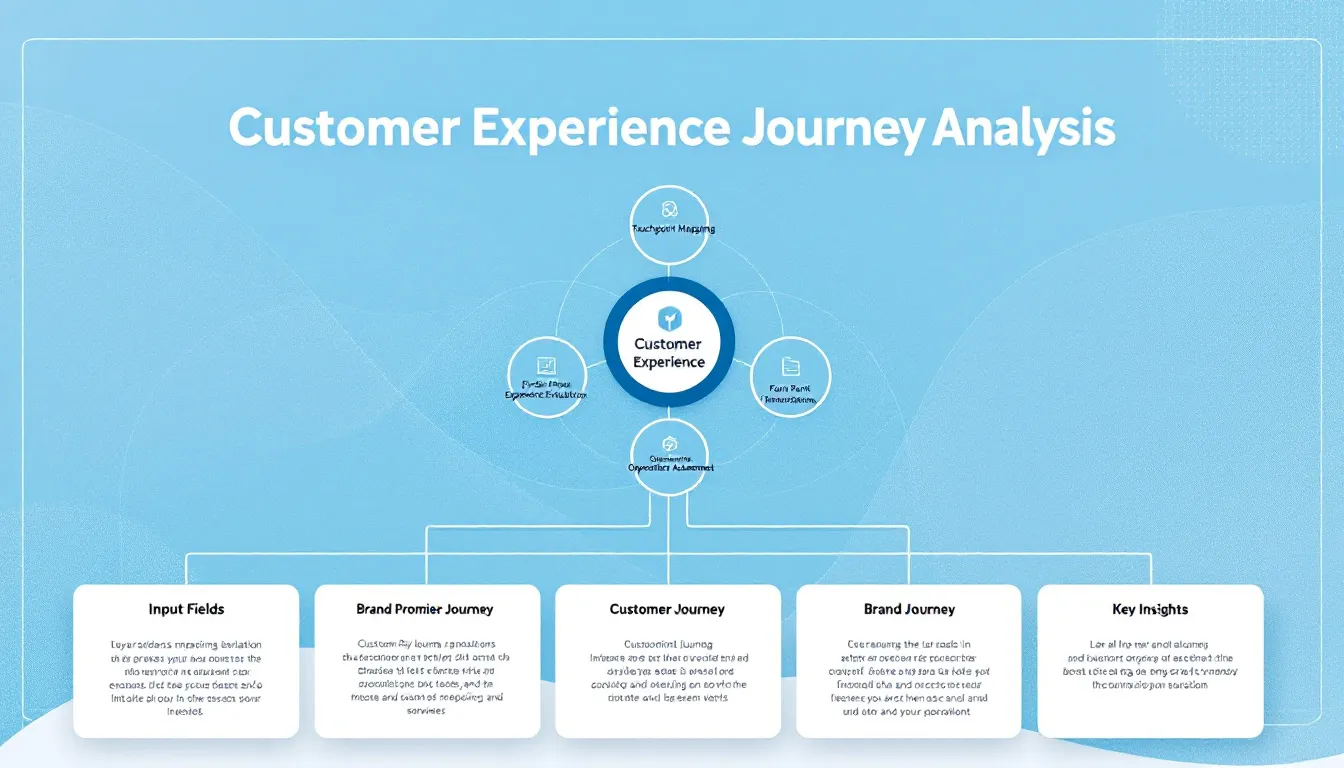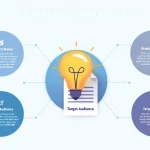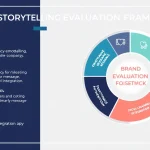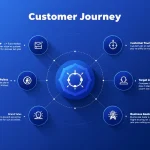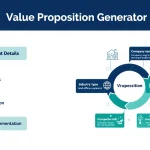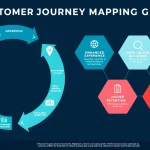Is this tool helpful?
How to Use the Customer Experience Journey Analyzer Effectively
This Customer Experience Journey Analyzer helps you map and optimize every interaction your customers have with your brand. To get the most accurate insights, fill in the following fields thoughtfully:
Input Fields Guide
- Brand Name: Enter the company or brand you want to analyze.
Example inputs: “GreenLeaf Organics”, “NextGen Tech Solutions” - Brand Promise: Describe the main value your brand offers customers.
Example inputs: “Providing eco-friendly products for a healthier planet”
or
“Empowering businesses through innovative cloud software” - Customer Touchpoints: List all platforms and moments where customers engage with your brand.
Example inputs: “E-commerce site, Social media ads, Customer support hotline, In-store kiosks”
or
“Mobile app, Email newsletters, Live chat, Partner events” - Target Customer Segment: Specify the main group your brand serves. This field is optional but recommended for focused analysis.
Example inputs: “Urban millennials interested in wellness”
or
“Small business owners in the tech sector” - Analysis Time Period: Define the timeframe for your experience review. Optional, but helps tailor insights.
Example inputs: “October to December 2023”
or
“Fiscal Year 2023”
What is the Customer Experience Journey Analyzer and Why Use It?
The Customer Experience Journey Analyzer is a practical tool designed to evaluate how your customers interact with your brand across multiple touchpoints. By comparing each interaction to your brand promise, you gain a clear view of strengths and weaknesses in the customer journey.
This helps you focus improvements where they matter most, increasing customer satisfaction and loyalty. Use this tool to uncover gaps in your service, identify friction points, and discover new opportunities to enhance every stage of the customer experience.
Key Benefits of the Tool
- Comprehensive journey mapping: Visualize and document all customer touchpoints for a complete overview.
- Brand promise alignment: Ensure every customer interaction reflects the core values and promises of your brand.
- Pinpoint pain points: Detect exactly where customers face obstacles or drop off.
- Prioritize improvements: Identify high-impact areas for resource allocation and action.
- Track changes over time: Analyze customer experience trends within specified periods to measure progress.
Practical Applications of the Customer Experience Journey Analyzer
This tool supports diverse use cases across industries and business sizes. Here are practical ways you can apply it:
Example 1: Retail Store Chain
- Brand Name: “Urban Threads”
- Brand Promise: “Fashion-forward styles accessible to all”
- Touchpoints: Online shop, Physical stores, Customer loyalty program, Social media campaigns
- Customer Segment: Young urban professionals
- Time Frame: January to June 2023
The analysis revealed inconsistencies between the online and in-store experiences. As a result, the brand focused on unifying messaging and technology to smooth the purchase process across channels.
Example 2: SaaS Company Customer Feedback
- Brand Name: “SyncSolutions”
- Brand Promise: “Streamlined workflow tools for remote teams”
- Touchpoints: Product onboarding, Customer support chat, User community forums, Email updates
- Customer Segment: Remote work professionals
- Time Frame: Q2 2023
Using the analyzer helped SyncSolutions identify where customers struggled most during onboarding. They optimized tutorials and support responses, improving customer retention significantly.
Understanding Customer Experience Journey Analysis
Customer experience journey analysis means systematically reviewing how customers engage with your brand from first contact through loyalty building. This approach helps you spot opportunities for improvement and innovation.
Core Elements of the Analysis Process
- Touchpoint Mapping: Document every way your customers interact with your brand.
- Experience Evaluation: Assess the quality and consistency of interactions.
- Pain Point Identification: Locate bottlenecks or negative experiences.
- Opportunity Assessment: Find unmet customer needs or expectations.
- Brand Promise Alignment: Verify that every touchpoint reflects your brand’s values.
Benefits of Using the Customer Experience Journey Analysis Tool
1. Gain actionable strategic insights
Understand your customer journey by identifying key moments that influence satisfaction and loyalty. This data helps you make informed decisions to enhance the overall experience.
2. Make data-driven decisions
Turn customer feedback into practical improvements based on fact, not assumptions.
3. Improve your competitive edge
Discover unique ways to differentiate your brand through superior, consistent customer interactions.
4. Optimize resource allocation
Focus your time and budget on touchpoints that most affect customer satisfaction and business outcomes.
Common Customer Experience Challenges and How This Tool Helps Solve Them
Inconsistent Brand Experience
By analyzing every touchpoint, you can identify where messaging or service falls short, ensuring a unified brand image across all customer interactions.
Customer Drop-Off Points
The tool pinpoints exact stages in your customer journey where customers disengage, helping you address these issues directly.
Inefficient Resource Allocation
Decide which touchpoints need immediate attention and which can be improved over time, maximizing your impact without overextending resources.
Best Practices for Implementing Customer Experience Journey Analysis
1. Preparation Phase
- Collect relevant customer data and feedback
- Set clear objectives for your analysis
- Engage stakeholders from marketing, sales, and support teams
- Define realistic timelines for each phase
2. Analysis Phase
- Map all customer touchpoints comprehensively
- Compare customer experience against your brand promise
- Identify trends and recurring issues
- Track customer emotions and satisfaction at each step
3. Implementation Phase
- Create specific action plans based on insights gained
- Assign team members to take ownership of improvements
- Set measurable goals and track progress regularly
- Adjust strategies as needed based on ongoing feedback
Important Disclaimer
The calculations, results, and content provided by our tools are not guaranteed to be accurate, complete, or reliable. Users are responsible for verifying and interpreting the results. Our content and tools may contain errors, biases, or inconsistencies. Do not enter personal data, sensitive information, or personally identifiable information in our web forms or tools. Such data entry violates our terms of service and may result in unauthorized disclosure to third parties. We reserve the right to save inputs and outputs from our tools for the purposes of error debugging, bias identification, and performance improvement. External companies providing AI models used in our tools may also save and process data in accordance with their own policies. By using our tools, you consent to this data collection and processing. We reserve the right to limit the usage of our tools based on current usability factors.
